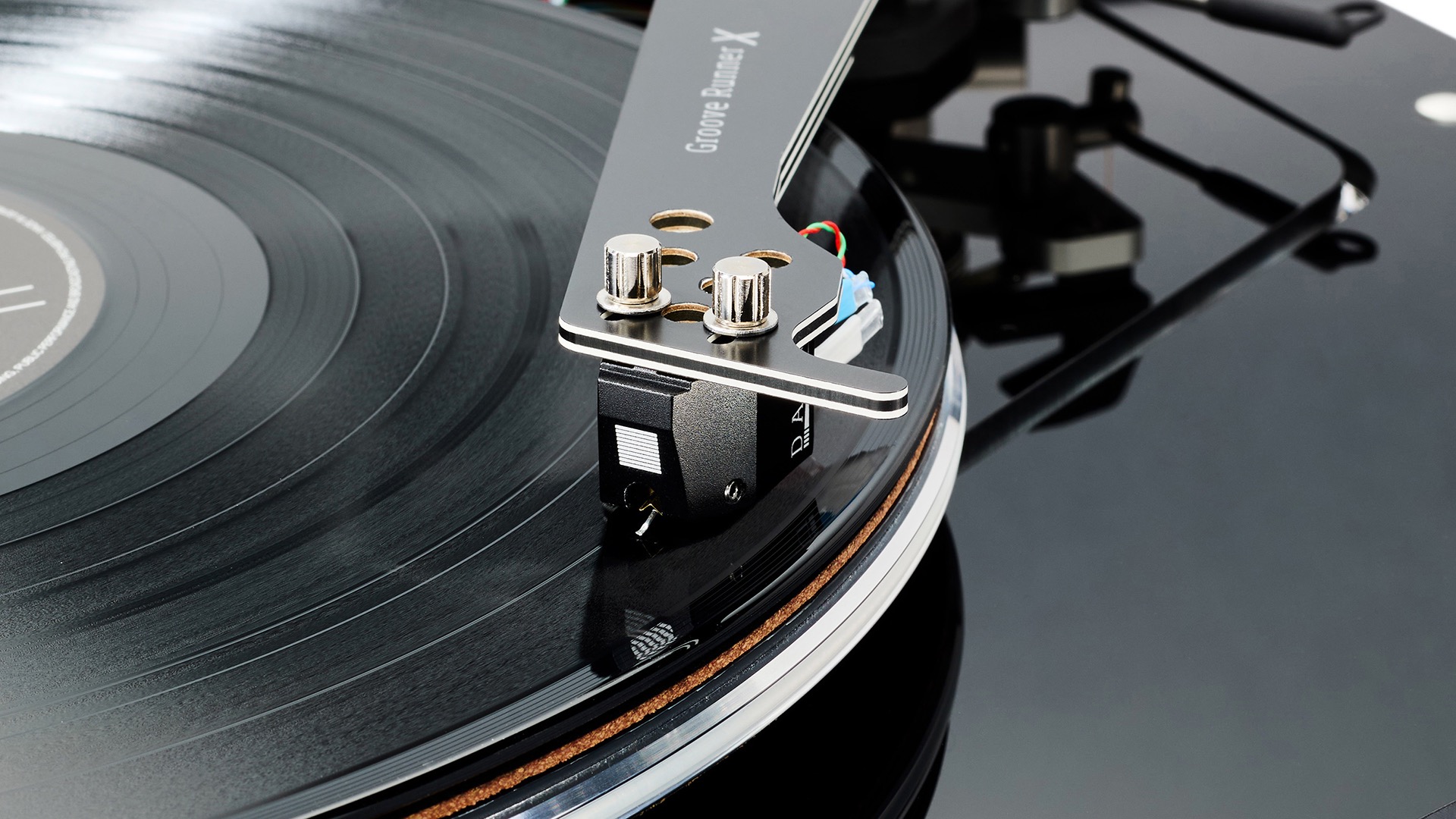What Hi-Fi? Verdict
Luxman’s D-10X is a hugely capable digital source that’s built superbly. Could be more entertaining though
Pros
- +
Immaculate build and finish
- +
Sonic authority and scale
- +
Digital inputs
Cons
- -
Analytical sonic character may not suit all
Why you can trust What Hi-Fi?
Our first thought on receiving the Luxman D-10X was that the company had made a mistake. The package in front of us was far too big and heavy to be packed with just a CD player. Maybe someone at Luxman had accidentally sent one of the company’s monster power amps instead? It turned out they hadn’t.
The D-10X is an SACD/CD-playing beast. While the generously sized casework is nothing unusual at this level, the vertebrae-straining weight is a different story. At 22.4kg, this player is heavier than most power amps we come across, and that’s down to the company’s no-compromise approach to construction.
Build
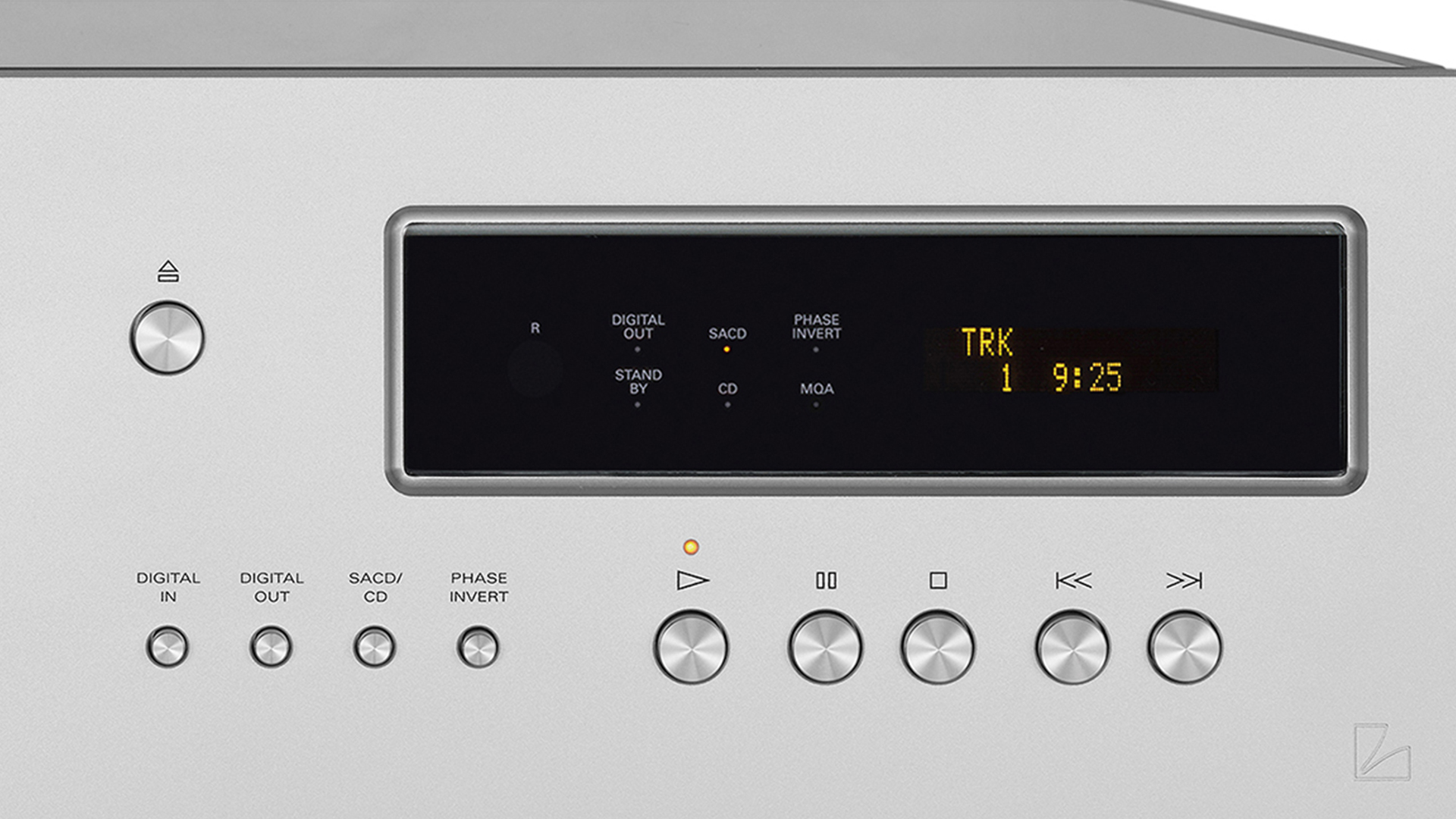
The casework is as rigid as they come, with thick aluminium panels and elaborate internal bracing. It inspires confidence in use and feels like the D-10X is made to pass down between generations of owners.
We love the company’s obsessive way with fit and finish. This product really is a joy to behold. Each part is beautifully made and every edge lines up perfectly.
This Luxman costs a lot of money, but the care taken over its build goes a long way towards justifying that expenditure. Compared to this, the similarly priced and otherwise excellent Audio Research CD9 SE feels somewhat crude.
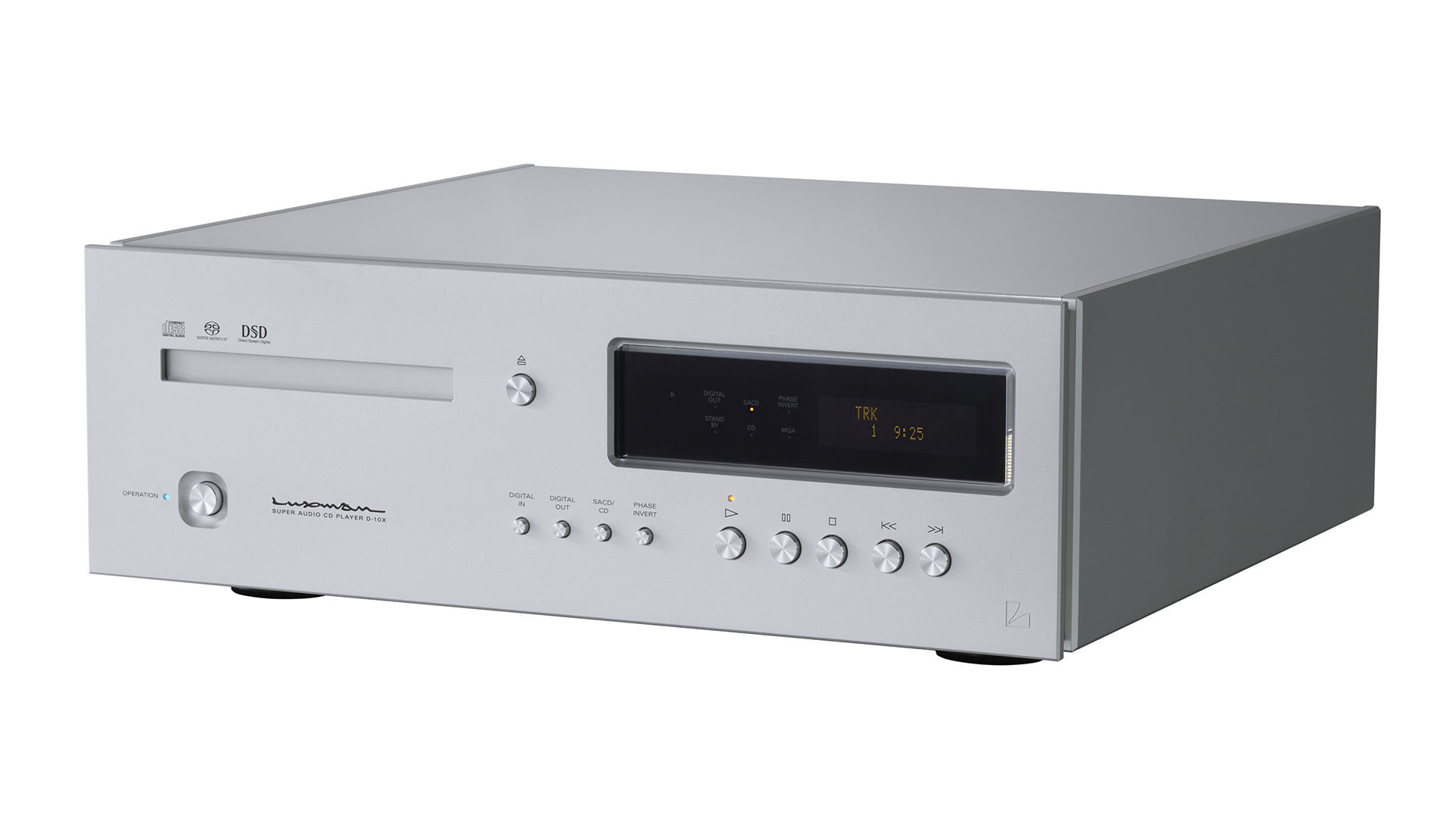
Supported formats SACD, CD (CD-R, CD-RW, MQA-CD)
Hi-res Up to 32-bit/768kHz (PCM), 22.4MHz (DSD)
Power consumption 48W
Frequency response 5Hz to 20kHz (CD), 5Hz to 38kHz (SACD), 5Hz to 47kHz ( USB)
Dimensions (hwd) 15.4 x 44 x 41.8cm
Weight 22.4kg
This impression of quality is more than skin deep. Take a look inside and you’ll find the latest version of the brand’s in-house disc drive. Called LxDTM-i (Luxman original Disc Transport Mechanism – improved), the drive is a truly substantial affair enclosed within 8mm thick aluminium sides and a 5mm thick steel top plate.
The aim is to maximise the information taken off the disc by preventing external disturbances from spoiling things.
The latest hi-fi, home cinema and tech news, reviews, buying advice and deals, direct to your inbox.
Disc drawers aren’t something we normally mention, but in this case, we’ll make an exception. The one in this player is a million miles away from the rickety plastic affairs we usually come across, even in pricey machines.
This drawer feels solid, precision made and positively glides into position. Luxman has even gone to the trouble of having a separate flap that closes behind the tray once it goes in. This flap prevents dust from getting inside the unit and is a nice touch.
The aura of precision engineering continues with the front panel controls. All the buttons work with a slickness that’s rare to find in low-volume high-end products. Even the display is a decent size, and easy to read once the Zoom button on the metal remote is pressed so that the information is enlarged.
Features
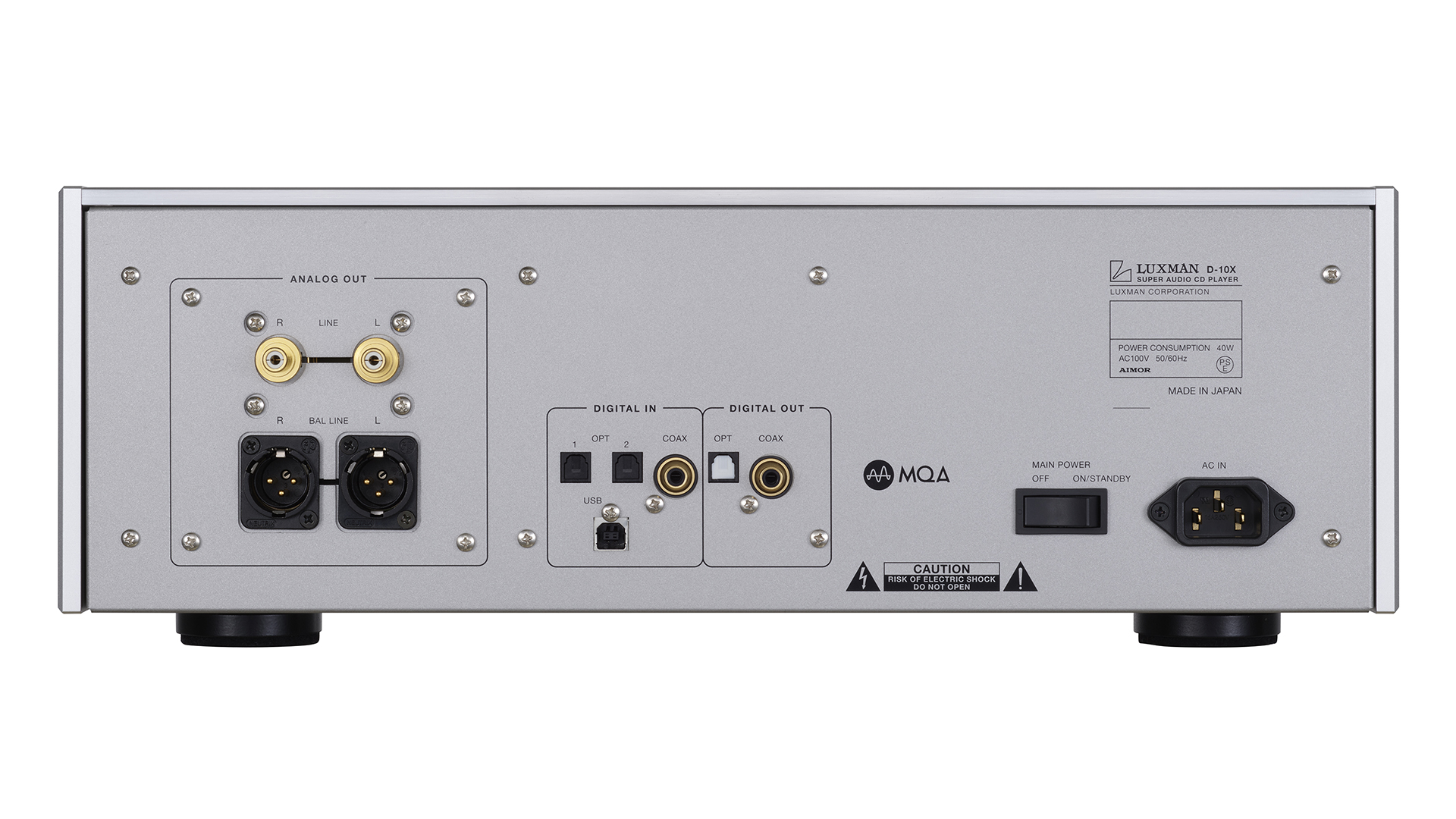
Luxman’s choice of digital-to-analogue converter chip is a bit of a surprise. Rather than going for any of the usual high-end options, the engineers have chosen a new chip made by ROHM Semiconductors. It’s called the MUS-IC BD34301EKV and is employed in a dual mono configuration here. This chip is claimed to be a cutting edge design, and the specs certainly back that up with 32-bit/768kHz PCM and DSD 22.4 MHz compatibility. MQA is also on the menu, which is welcome.
Elsewhere, the claim is of a high capacity power supply that’s stable and low noise, with independent regulated outputs for specific sections of the circuitry. We expect carefully laid-out signal paths and power supply feeds, and get them, along with the high-grade internal components that this price level demands.
If the D-10X only had to deal with SACD and CD there would be no need for the internal DAC to be so highly specified with regards to file compatibility. But Luxman has included digital inputs and these make this player a far more versatile proposition.
While the USB (type B) inputs claim those headline-grabbing figures, the coax and optical make do with an upper limit of 24-bit/192kHz for PCM, and of course, there’s no DSD option. For most people, this won’t be an issue, as PCM is by far the most dominant digital language.
Analogue is represented by a pair of balanced XLR outputs alongside a pair of single-ended RCAs. There’s also the standard coax and optical digital output pairing, though apart from recording, we can’t see why anyone would use anything other than the D-10X’s internal DAC circuitry.
A source of this Luxman’s standard positively demands a top-class partnering system. We use our usual Burmester 088/911 Mk III amplifier combo and ATC SCM50 speakers for the bulk of the listening. We also swap in Nagra’s excellent Classic Preamp just to see how the Luxman copes, and because the Nagra sounds lovely.
Sound
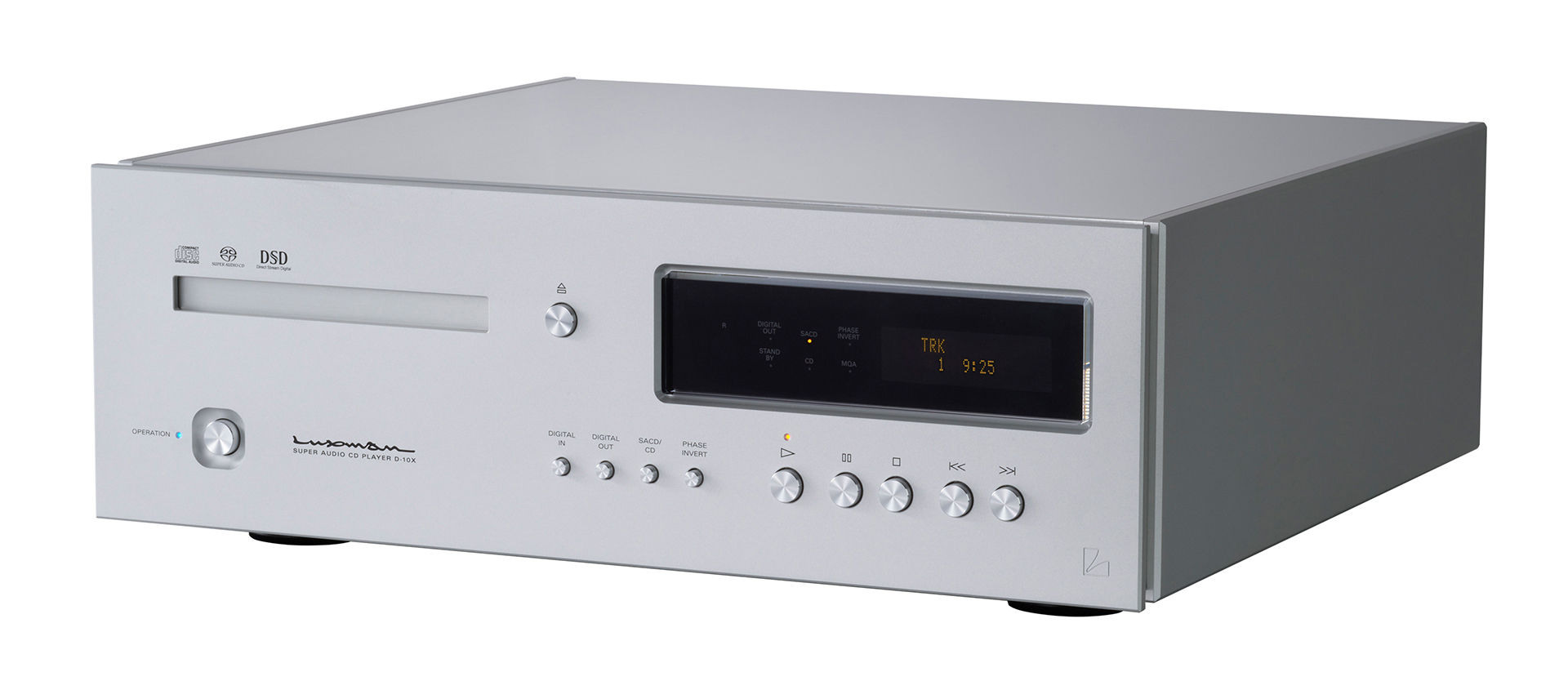
Once given a few days on repeat to settle, the D-10X gives a fine account of itself. Its sonic presentation is characterised by immense stability, a sea of fine detail and breath-taking sonic authority.
We play Arvo Part’s Tabula Rasa CD and it delivers a huge sound stage filled with precisely placed instruments. There’s a pleasing sense of the hall where the recording was made and the orchestra’s place in it. The stereo image is immaculately layered and remains focused even as the piece becomes ever more complex.
There’s no sense of strain when things get difficult, with the Luxman remaining a model of calm and control no matter how demanding the music gets.
This player is capable of thunder when required too. It punches out the seismic dynamic shifts in Tabula Rasa with an impressive degree of power. There’s no shortage of muscularity here or low-frequency heft.
This is no muscle-bound performer though. There’s a generous dose of agility across the frequency range with the Luxman responding to the signal in an articulate and controlled manner. It’s something that’s apparent when we listen to Alicia Key’s self-titled album.
We’re impressed with the clarity on offer and the way the player makes it easy to follow individual instrumental strands. Listening to Time Machine is a treat in most ways.
There’s no arguing with the quantity of information the Luxman reveals (it’s up with the best in this respect) or the way it thumps out that distinctive, hard-charging bassline. The leading edges of notes are crisp, but never over-etched thanks to a top-end that balances refinement with bite well.
This is not a product that sweetens recordings to make them sound more pleasant than they are. Give the D-10X an aggressive or forward recording and that’s exactly what you’ll hear. It seems Luxman has aimed for absolute honesty and that’s to be applauded.

It’s also important to note that this machine prioritises analysis over entertainment and we find ourselves studying the album’s production rather than just listening to the music on more than one occasion.
This is something we never experience when listening to class leaders, such as the two-box Chord Blu II/DAVE combination or Audio Research’s CD9 SE. In trying to identify what the Luxman does that makes us feel this way, we find a tendency for leanness through the midrange coupled to dynamic nuances that aren’t quite fully formed. It makes Keys sound a little flat where we expect passion and natural warmth.
It doesn’t help that rhythms are rendered in a slightly stilted, mechanical way rather than simply flowing as they do in the best players at this level. The Chord transport/DAC pairing, in particular, soars when it comes to rhythmic cohesion and dynamic contrasts.
We move to the SACD of Eric Bibb and Needed Time’s Good Stuff and the D-10X shifts between formats slickly. We’re impressed by the clarity here and the high-resolution format’s more fluid nature when compared to CD.
There’s a lovely spacious quality to the recording and the Luxman conveys this well, but once again we’re left wanting a little more emotion through the midrange. Bibb has a terrific voice and puts in some fabulous performances on this album, but the D-10X never quite hits the mark for us.
This sonic character remains consistent through the digital inputs. Our resident MacBook Pro links to the USB connection without issue and the D-10X plays a wide range of file formats flawlessly.
Similarly, our reference Naim ND555/555 PS DR music streamer shows that the co-ax input works almost as well, though we notice a bit of an edge at high frequencies with this pairing. Regardless of digital input chosen, there’s no denying the Luxman’s informative and even-handed nature.
Verdict
We have no doubt that some people will love the D-10X’s forensic approach to music replay, revelling in the wealth of detail it renders and the way it sounds authoritative, composed and controlled. Add the exceptional build quality and finish, and it certainly makes a strong case.
However, the Luxman falls short in its ability to communicate the passion in music, and that makes it a talented diversion rather than an essential listen.
SCORES
- Sound 4
- Features 5
- Build 5
MORE:
Read our round-up of the best CD players
Read our Chord Blu II review
Read our Audio Research CD9 SE review
What Hi-Fi?, founded in 1976, is the world's leading independent guide to buying and owning hi-fi and home entertainment products. Our comprehensive tests help you buy the very best for your money, with our advice sections giving you step-by-step information on how to get even more from your music and movies. Everything is tested by our dedicated team of in-house reviewers in our custom-built test rooms in London, Reading and Bath. Our coveted five-star rating and Awards are recognised all over the world as the ultimate seal of approval, so you can buy with absolute confidence.

